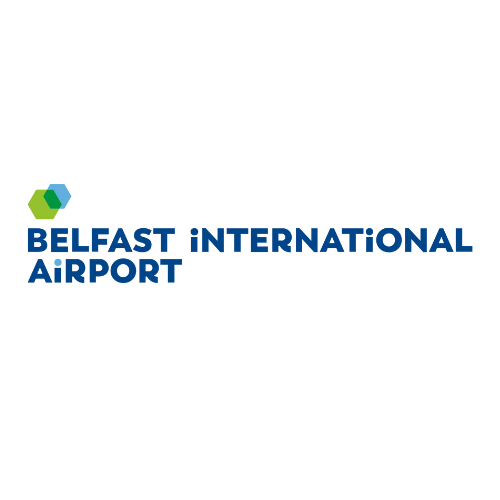The modern airport is a hub of activity, data, and opportunity. With millions of passengers passing through terminals worldwide every day, airports generate vast amounts of information. However, the key to operational efficiency, enhanced customer experiences, and profitability lies in effectively collecting and leveraging high-quality data. This article explores how airports can harness data to streamline operations, enhance passenger journeys, and drive revenue growth.
The evolution of airport data collection
Historically, airports had limited access to passenger data. Information was primarily held by third parties such as airlines and parking operators. As a result, passengers remained largely anonymous, making it difficult for airports to tailor services or anticipate customer needs.
Today, innovative solutions like Rezcomm Marketplace have transformed this landscape. Airports can now collect data directly from passengers through online bookings, in-terminal Wi-Fi, loyalty programs, and feedback systems. This direct access empowers airports to move beyond being mere transit points and become experience curators.
For instance, by analysing passenger preferences, airports can recommend dining options, offer upgrades to fast track services or lounges, and promote products aligned with individual needs. The ability to collect and utilise data effectively is revolutionising the passenger experience, turning airports into hubs of personalised service.
The cost of poor data quality
While collecting data is essential, its value depends on accuracy and relevance. Poor data quality can be more detrimental than having no data at all. Gartner estimates that poor data quality costs organisations an average of $12.9 million annually. For airports, this could mean inefficient resource allocation, lost revenue opportunities, and diminished customer satisfaction.
For example, inaccurate passenger flow data might result in overstaffing at some checkpoints while leaving others understaffed, leading to delays and operational bottlenecks. This mismanagement not only frustrates passengers but also reduces time spent in retail and dining areas, directly impacting revenue. Ensuring high-quality, actionable data is critical to avoiding these pitfalls and maximising operational effectiveness.
How high-quality data benefits airports
1. Enhancing operational efficiency
Airports are complex ecosystems with numerous interdependent operations, from baggage handling and security checks to retail management and customer service. High-quality data provides the insights necessary to streamline these processes, reducing bottlenecks and optimising resource allocation.
For instance, real-time passenger flow monitoring can minimise wait times at security checkpoints, improving passenger satisfaction and increasing dwell time in retail areas. Research indicates that increasing dwell time by just 10% can lead to a 5% rise in food and beverage revenue per passenger.
Rezcomm’s advanced data solutions not only deliver measurable impact for airports but for cruise ports too. MDL Marinas partnered with Rezcomm to launch a state-of-the-art digital parking and reservation system at Ocean Village Marina in Southampton. This innovation has simplified the customer journey while maximising operational efficiency, demonstrating how data-driven solutions can enhance both maritime and aviation operations.
2. Driving revenue growth
Comprehensive data analytics enable airports to gain a 360-degree view of their revenue streams, uncovering high-performing areas and identifying new opportunities. Rezcomm’s Commercial BI module has empowered industry leaders to optimise key revenue areas, including parking, retail, and ancillary services.
Tweed New Haven Airport, anticipating passenger growth and the development of a new terminal, has relied on Rezcomm’s insights to make data-driven decisions. This approach ensures the airport remains adaptable to increasing demand, while strategically identifying growth opportunities within its existing operations.
Clients like Hermes Group and ANA have rolled out Rezcomm Marketplace across all their airports, underscoring the platform’s scalability and effectiveness. By centralising data and unlocking actionable insights, Rezcomm equips airports to thrive in a competitive landscape.
3. Creating personalised passenger experiences
Today’s passengers expect more than just a functional journey – they seek seamless and personalised experiences. High-quality data enables airports to deliver on these expectations by understanding individual preferences and tailoring services accordingly.
With Rezcomm’s Customer BI tools, airports can analyse passenger behaviour and design hyperpersonalised offers, from exclusive retail promotions to curated travel packages. Personalisation not only enhances satisfaction but also fosters long-term loyalty, increasing both repeat visits and spending.
Actionable steps for ensuring high-quality data
To unlock the full potential of data, airports must implement strategies to maintain its quality and usability. Here are four actionable steps:
1. Establish robust data governance practices
Data governance ensures consistency, accuracy, and security across all datasets. Airports should assign data ownership to specific teams or individuals and enforce standardised practices for data collection, storage, and analysis.
2. Regularly cleanse and validate data
Routine data cleansing is essential to eliminate inaccuracies and redundancies. Automated validation tools at the point of data capture can further reduce errors, ensuring that only reliable information enters the system.
3. Integrate data sources
Siloed data limits its utility. By integrating data from various sources, such as booking systems, retail transactions, and operational databases, airports can achieve a unified view of their operations. Rezcomm’s BI suite offers centralised platforms that consolidate disparate data streams, enhancing decision-making.
4. Leverage the right tech stack for reliability and security
A robust tech stack is critical to ensure data reliability, security, and scalability. By running solutions on trusted platforms, such as AWS, airports can benefit from advanced security features, high uptime, and seamless integration capabilities. This foundational reliability supports both operational excellence and regulatory compliance, enabling airports to confidently act on their data insights.
5. Utilise predictive analytics
Predictive analytics, powered by artificial intelligence (AI), enable airports to anticipate passenger needs and optimise operations in real time. For example, AI-driven models can forecast peak traffic times, identify inefficiencies, and recommend actionable solutions. Predictive models can also provide actionable insights into retail demand, alerting airports to stock popular items during high-traffic periods or adjust staffing for peak shopping times. By proactively addressing potential challenges, airports can enhance both efficiency and customer satisfaction.
The role of IoT and real-time data visualisation
The Internet of Things (IoT) is transforming data collection in airports. IoT-enabled devices, such as smart sensors and RFID tags, continuously transmit data that supports operational efficiency. For example, sensors at security checkpoints monitor passenger flow, while RFID tags track baggage movement.
Additionally, passengers’ smartphones are valuable data sources. When passengers connect to airport WiFi or use mobile apps, their interactions provide insights into behaviour and preferences. This data enables airports to optimise operations, predict peak times, and offer personalised services.
Interactive dashboards further enhance the value of IoT data by consolidating real-time insights into intuitive displays. These tools support airport operators in monitoring critical metrics, detecting trends, and responding to issues proactively. Dashboards can highlight peak congestion points, track retail performance, and provide actionable insights, enabling swift and informed decision-making.
Transforming insights into action
The true value of data lies in its application. Airports can use data-driven insights to:
Optimise passenger flow
By analysing historical and real-time data, airports can predict congestion points and adjust operations accordingly. For instance, allocating additional staff during peak times can reduce wait times, improving the passenger experience while lowering operational costs.
Maximise ancillary revenue
Understanding passenger preferences enables airports to design hyperpersonalised offers that drive spending. Targeted promotions for retail, dining, and other services not only enhance the passenger journey but also increase revenue. For example, tailored discounts on parking or exclusive lounge packages can convert occasional customers into loyal patrons.
Enhance marketing effectiveness
Rezcomm’s Marketing BI module equips airports with tools to measure campaign ROI, enabling smarter decisions. From email campaigns to loyalty programs, data-driven marketing ensures investments deliver measurable results. This precision helps airports refine strategies and maximise their marketing impact.
Future trends: Data-driven airports
Advancements in Artificial Intelligence
As artificial intelligence, machine learning, and advanced analytics evolve, airports will gain even greater capabilities to process and interpret data. Predictive models will grow more sophisticated, enabling airports to anticipate passenger needs with greater accuracy.
The artificial intelligence in aviation market size was over USD 6.07 billion in 2024 and is poised to exceed USD 816.65 billion by 2037, witnessing over 45.8% CAGR during the forecast period. This rapid advancement underscores the transformative potential of AI in optimising operations and elevating passenger experiences. Hyperautomation will further enhance efficiency, automating tasks across functions and freeing staff to focus on strategic initiatives.
Sustainability through data
Additionally, sustainability will become a core focus for data-driven airports. Data analytics can help reduce environmental impact by optimising energy use, improving waste management, and reducing emissions through smarter resource allocation. Airports committed to sustainability can leverage these insights to align with global environmental goals and meet passenger expectations for greener travel.
Centralised data and real-time insights
Data lakes and orchestration tools will centralise information from disparate systems, ensuring seamless access to actionable insights. Real-time decision support will help operators to respond instantaneously to emerging challenges, maintaining smooth operations in high-traffic environments.
Rezcomm is at the forefront of this transformation, providing industry-specific tools that boost airports’ ability to unlock the full potential of their data. From real-time dashboards to advanced Web Analytics, our BI solutions are designed to strengthen airports’ position in a competitive landscape.
Unlock your airport’s potential
As airports evolve into smart hubs, powered by data and technology, embracing a data-first approach is crucial. Platforms like Rezcomm Marketplace empower airports to leverage data effectively, unlocking new opportunities for growth, efficiency, and personalised service. Whether it’s improving customer experiences, boosting revenue, or streamlining operations, the possibilities are endless.
Ready to elevate your airport’s data strategy? Download our brochure to explore Rezcomm’s innovative solutions and book a meeting with our team today.



























